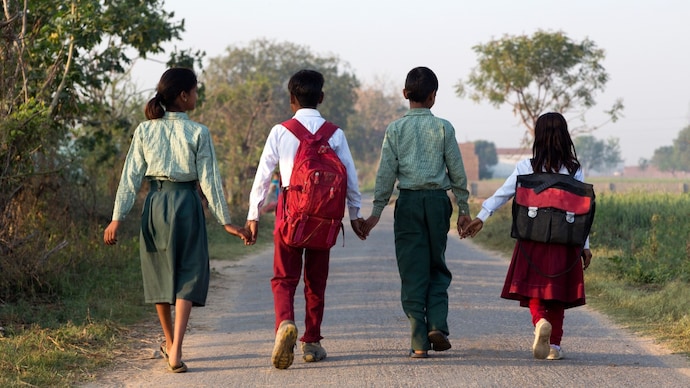Heavy backpack increases risk of scoliosis, back pain in children
Experts are raising concerns about the rising cases of back pain among school children due to heavy backpacks, which can lead to serious spine and mobility problems.

in short
- Heavy backpack puts excessive strain on the child’s spine and musculoskeletal system
- A child’s backpack should not exceed 15% of his body weight
- Carrying heavy bags incorrectly can lead to spinal curvature and scoliosis.
Heavy backpacks have become a growing concern for children aged 6 to 16 years, leading to increasing cases of back pain. Experts are warning that carrying extra weight in an improperly fitted backpack could impact children’s spinal health and lead to mobility problems later in life.
According to Dr. Sameer Ruparel, orthopedic and spine surgeon at Lilavati Hospital, Mumbai, back pain is no longer a problem only for adults, it is becoming common among school-going children too.
“A heavy backpack puts excessive strain on a child’s spine and musculoskeletal system. This can lead to poor posture, muscle strain and even back pain,” he said.
Dr Ruparel said that 8 out of 10 children may experience back pain due to their school bags, which can also lead to symptoms like tingling, numbness or even red marks on their shoulders.
ideal bag weight
Experts recommend that a child’s backpack should not exceed 15% of their body weight.
Dr. Ruparel gave specific guidelines for the weight of the bag, stating that children in classes 1-2 should ideally not carry more than 1 kg, while children in higher classes should weigh appropriately: Around 5 Kgs for 9-10 students.
He also stressed the importance of wearing both straps of the backpack to distribute the weight evenly and avoid long-term spine damage. “If the bag hangs below the waist, it’s too heavy,” he warned.
In 2018, the Delhi government limited the weight of school bags of children from classes I to X. The weight of school bags for class I and II students should not exceed 1.5 kg, while the weight of school bags for class III to V students should be between 2 kg. kg to 3 kg.
The weight of school bags of class VI and VII students should not exceed 4 kg, while the weight of school bags of class VIII and IX students should not exceed 4.5 kg. The weight of the school bag of a class 10 student should not exceed 5 kg.
Bad posture and scoliosis
In addition to back pain, heavy bags can cause rounded shoulders and neck and shoulder pain. Children who don’t wear their backpacks properly, such as slung over one shoulder, risk leaning to one side, which can lead to spinal curvature and even conditions like scoliosis. Scoliosis causes an abnormal lateral curve of the spine, often in the shape of an S or C.
Dr. Burhan Saleem Siamwala, Consultant Spine Surgeon, Medicover Hospital, Kharghar, Navi Mumbai, said that improper sitting posture in classes and frequent use of phone or tablet are also contributing factors of back pain.
“Back pain is on the rise in children and parents need to ensure that the weight of their child’s backpack is appropriate for their age and size,” he said.
Dr Siamwala stressed the importance of a balanced diet rich in Vitamin D and calcium for growing children. She advised parents to keep an eye on their children’s posture both at home and school and consult a doctor if they notice any symptoms of back pain.
“A proper lifestyle along with regular physical activity can help in relieving these pains,” he said.
Preventive Tips
To prevent back pain, experts recommend several practical tips for both parents and children. Dr. Ruparel advised children to bend their knees and not their waist while lifting heavy bags.
He suggested that heavier items should be placed at the bottom and center of the backpack to ensure balanced weight distribution. Using a bag with wide straps, multiple sections, and a waist belt can help reduce stress on the spine.
Dr. Ruparel said, “Children should walk with a straight spine while wearing a backpack.”
“Regular stretching and exercise can help keep back pain at bay and parents should ensure their children have regular checkups. If back pain is detected, physiotherapy can be done to strengthen the muscles,” she said. “Can help.”